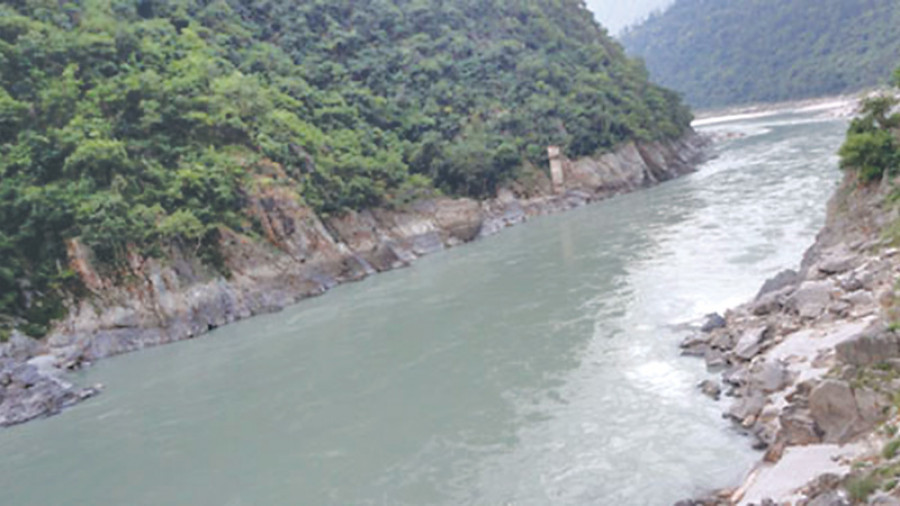Editorial
Stuck again
It is not unfair for Nepal to expect more flexibility from India on Pancheshwar project.
The optimism seen in the past couple of months on progress in the Pancheshwar Multipurpose Project has again waned. Prime Minister Pushpa Kamal Dahal and his Indian counterpart Narendra Modi, during Dahal's India visit four months ago, had announced to push ahead with the project that has been in limbo for nearly three decades since Nepal and India signed the Mahakali Treaty in 1996.
In the first week of June, the two prime ministers directed the respective set of officials to conclude the project’s DPR within three months. The two sides also pledged to conclude the modalities of the implementation within a year after the DPR’s approval. Following the Delhi announcement, there was hope that the multipurpose hydro project that has three components—generation of 6,480 megawatts of electricity, irrigation and flood control—would gather momentum.
Nepali and Indian officials expedited bilateral talks accordingly. But, after multiple rounds of dialogue, officials from the two neighbouring countries have yet again failed to settle major disputes. Their latest meeting in Kathmandu this weekend, which was supposed to finalise the DPR, failed in its mission as neither side would budge from its stance. The issue of determining costs and benefits has always been the major bone of contention, delaying the report for years. Experts and officials involved in the negotiations say, quantifying the benefits for each side is important as investments will be based on it. The main sticking point of bilateral negotiations has been which country gets how much benefit from the multipurpose project.
Nepali officials expect some flexibility from India on the irrigation component as vast swathes of India will be irrigated from the regulated water while the benefits Nepal gets will be negligible.
Despite making some progress in the dialogue, officials ended talks inconclusive this time around as well, missing the deadline to prepare the much-awaited DPR yet again.
The irony is that the two sides, while signing the Mahakali Treaty in 1996, had pledged to prepare the DPR within six months of its ratification. Twenty seven years down the line, the report still eludes them. In the 1990s, leaders, mainly in Nepal, would sell dreams of developing the Pancheshwar project to change the face of the far-western region that has historically been on the backburner of development. Unfortunately, it has now become a textbook case of how a mega project fails when the two sides stick to their guns.
However, multiple studies conclude that if Nepal and India succeed in somehow settling their differences and can develop the project, Pancheshwar can be an example for the development of other mega projects such as Karnali Chisapani. As India is the project’s major beneficiary and an emerging leading regional economy, it wouldn't be unfair for Nepal to expect more flexibility and generosity from the southern neighbour in determining the costs and benefits. That would also be just about the perfect example of the Modi government walking its ‘neighbourhood first’ policy talk.



 11.12°C Kathmandu
11.12°C Kathmandu












%20(1).jpg&w=300&height=200)

